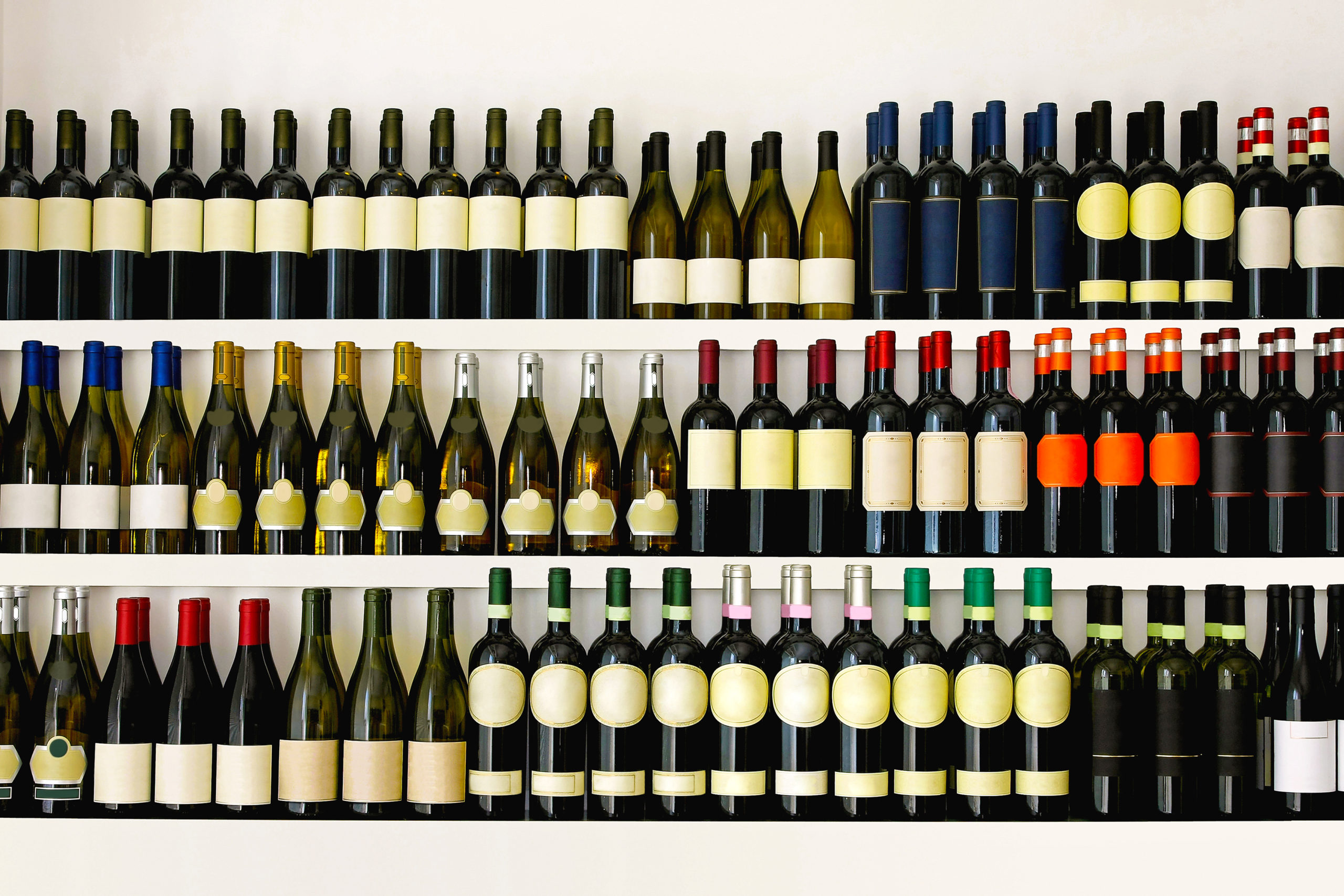“We’ve seen some people start to feel that maybe packaging is not as important and I would make the argument that it’s more important than ever.” – David Schuemann, Owner/Creative Principal of CF Napa Brand Design
It is widely known that the alcohol beverage market is saturated with offerings, and the clamor for coveted space in consumers’ shopping carts is only becoming more competitive. BevTest spoke with brand design firms from coast to coast that vehemently assert that the foundation of a brand’s success, as well as its failure, lies in its packaging. Though these authorities forecast imminent collapse for brands that don’t invest in professional design, that blend in with the crowd, and that rush through fine details in development, they have also shared their keen insights on forward-thinking strategies that, if heeded, both establish and secure the modern consumer’s attention.
1. Don’t Be Cheap
According to our design experts, one of the biggest mistakes a brand can make is not allocating room in the budget for packaging development. David Schuemann, Owner and Creative Principal of CF Napa Brand Design, says that “we’ve seen some people start to feel that maybe packaging is not as important and I would make the argument that it’s more important than ever.” Kevin Shaw, Owner of design firm Stranger & Stranger, points out that “you have to get inside your customer’s head” in order to avoid “designing for yourself.” According to Scout Driscoll, Founder and CEO of wine branding and design firm VINT, another pitfall is “having your friends design a label.” Driscoll urges even smaller producers to invest in a professional designer because “if you don’t sell it, if people aren’t buying it, you’re going out of business.” Nicole Flores and Kat Karpati, Creative and Executive Directors at Hatch Design, say that many brands they’ve worked with start with in-house design, but that then, eventually, “a few years down the road, they’ll come to us to help them get to the next level.” 
Schuemann understands that a lot of producers are “bootstrapping it,” but pushes that investing in professional designers is essential because, initially, “what [you’re] selling is the packaging more than the product itself.” Most design firms have tiered pricing in order to offer solutions for a range of budgets, and “given that distributors are not just out there pounding the pavement,” Schuemann justifies the metrics for successful packaging as being delivered in “clean numbers” when sales jump. When working with designers, Driscoll encourages brands to “make your marketing choices with your head and not your gut.” For those smaller producers that are tentative about affording a designer, she notes that “if they have one beautiful label design that’s locked in and recognizable” they can modify that slightly across the numerous offerings within the brand, a solution that’s “much more affordable than doing a custom design for every single [product] they offer.” Having outside eyes on a packaging project can also create a better idea of not just who a brand is but “what they want to be,” and Flores and Karpati feels this emboldens producers to “see the forest through the trees.”
“If you don’t sell it, if people aren’t buying it, you’re going out of business.” Scout Driscoll, Founder and CEO of wine branding and design firm VINT
2. Don’t Be Boring
A common challenge faced when launching a product in an overflowing category is making your brand stand out while maintaining recognizable characteristics. Driscoll acknowledges that “there’s certainly a long legacy of aesthetics that are tied to certain styles of wine” and that you want your brand’s packaging to “trigger those feelings” while still “pushing the envelope,” further pressing that “when people don’t differentiate, when they copy or try to follow in the footsteps of their biggest competitor, it’s a huge mistake because they’re not identifying what makes their brand unique.” Schuemann echoes warnings against this, giving the example of a client that was in the “saturated sector” of vodka, describing that it had a “fairly decent following” but “terrible packaging” that was not lined up with the quality of the product, and therefore did not stand out on shelves already jostling with clear offerings. Shaw agrees that packaging shouldn’t just fall in line with that of the others in its category; he “cuts to the chase” and asks, if on a long row of similar products, “why should anyone care about [your brand]?” Shaw adds that in ensuring your product stands out, “yearly trends are never to be followed” for many reasons, but essentially because “it can take two years for a brand to make it from briefing to shelf stocking and will look out of date before it’s even launched.” Flores and Karpati further surmise that with every trend comes a “backswing.”
There are many solutions to making sure a brand doesn’t fall into what Shaw refers to as an “existential wormhole.” Driscoll attests that “all consumers truly crave an authentic brand,” and just need “something they can connect with that’s rooted in a very clear story.” Schuemann calls this the “brand essence,” the “heart and soul of the brand,” and encourages the development of a story around which to “wrap the packaging” to help express it, a process his firm took with the redesign of the aforementioned vodka which has since “completely taken off.” Flores and Karpati urge brands to be “provocative” with their packaging because many consumers have chosen their go-to products and therefore need “inspired desire” to be “provoked” into a new promised experience. In taking the risk of pushing forwards provocatively, Shaw reassures that “polarization is good,” and that it’s okay if “[some] people don’t like you” as long as “some people love you.”
“Why should anyone care about [your brand]?” – Kevin Shaw, Owner of design firm Stranger & Stranger
3. Don’t Rush & Gloss – Brush & Polish
Even after carefully examining the many facets of packaging that reflect a brand’s identity, things can still fall through the cracks. Schuemann often sees a lack of attention given to functionality and finds it “amazing” that so many products wind up with “bubbles and rips and tears and labels that go on crooked and just don’t look very good” as well as the headache of “[bottle] shapes that couldn’t hold the screenprinting or label,” leaving producers with “thousands of bottles they can’t use” and expensive delays that butt up against launch dates. Though it should be obvious, he also urges that brands ensure their labels are TTB compliant and to be aware of possible trademark infringement, warning that “you kinda get what you pay for” when “there are a lot of online design resources…that are just copying things they’ve seen” which can result in “lawsuits that will cost hundreds of thousands of dollars down the road.”
When running over your packaging with a fine-tooth comb, consider that the specific patterns of the current market are instrumental to your brand’s prosperity. We don’t need to be reminded that we are living in a world in which social media is a heavily relied-upon platform, and Driscoll counsels that “it’s really important that your packaging design be recognizable on a tiny phone” because “your label, for the most part with people buying online, is going to be a centimeter tall” so it’s crucial that your brand is “differentiated at a glance.” Driscoll cautions that “if you’re not saying something distinct” that can be interpreted “in the blink of an eye,” then “you’ve really not done your product justice.” Once purchased, Flores and Karpati carry the importance of stressing instantaneous brand identification into the modern era of “grab and go, single-serve” products. As opposed to the time consumers spend with a “gallon of milk or orange juice that sits in [the] fridge” for a number of days, consumers are spending mere minutes to hours with single serving beverages, which means that your brand’s packaging has a limited amount of time in which to convey its story and offerings. An additional way to secure what Shaw refers to as “well-designed products that over-deliver on the shelf” that simultaneously “deliver clear stories on screen,” both Driscoll and Schuemann avidly emphasize the display or awards and tasting notes. “When you’re selling online you have a consumer that can’t pick [your product] up, can’t touch it and feel it and certainly can’t taste it,’ which Schuemann acknowledges makes it “that much harder” to describe the “intrinsic value.” Driscoll finds the solution in “including a tasting profile” in addition to any awards in order to drive home “what really makes [your product] special.”
With almost 40 years of experience with thousands of brands, BevTest can confirm that problematic planning yields problematic packaging, and that corner-cutting, monotonous, and thoughtless products do not succeed. BevTest’s Associate Director, Laura Kruming-Berg, further stresses the lessons offered by these expert designers, concluding that “this is not just marketing speak from design firms seeking new clients,” nor “tactics for big budget brands,” but rather “non-negotiable rules for brands of all sizes.”





